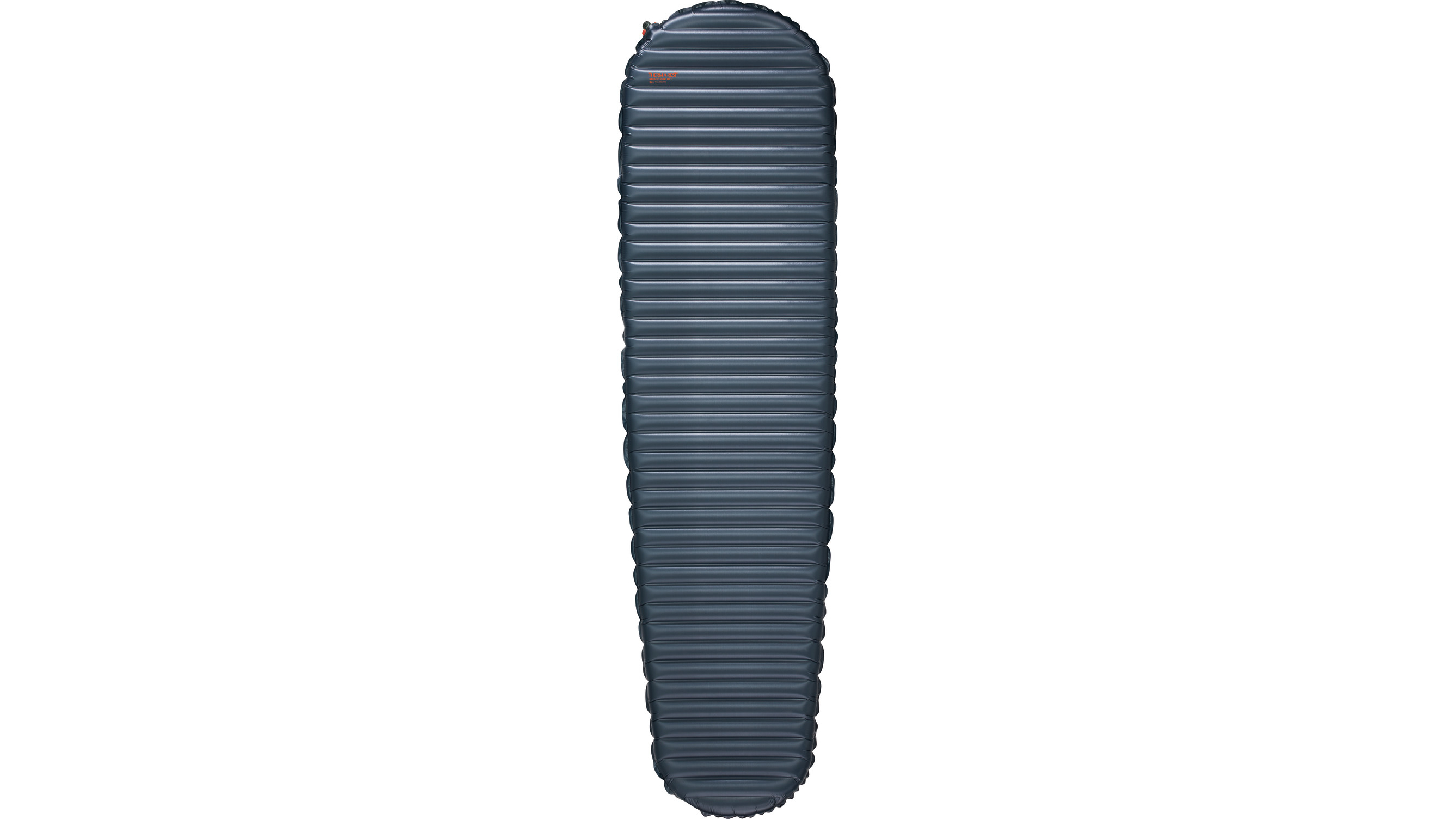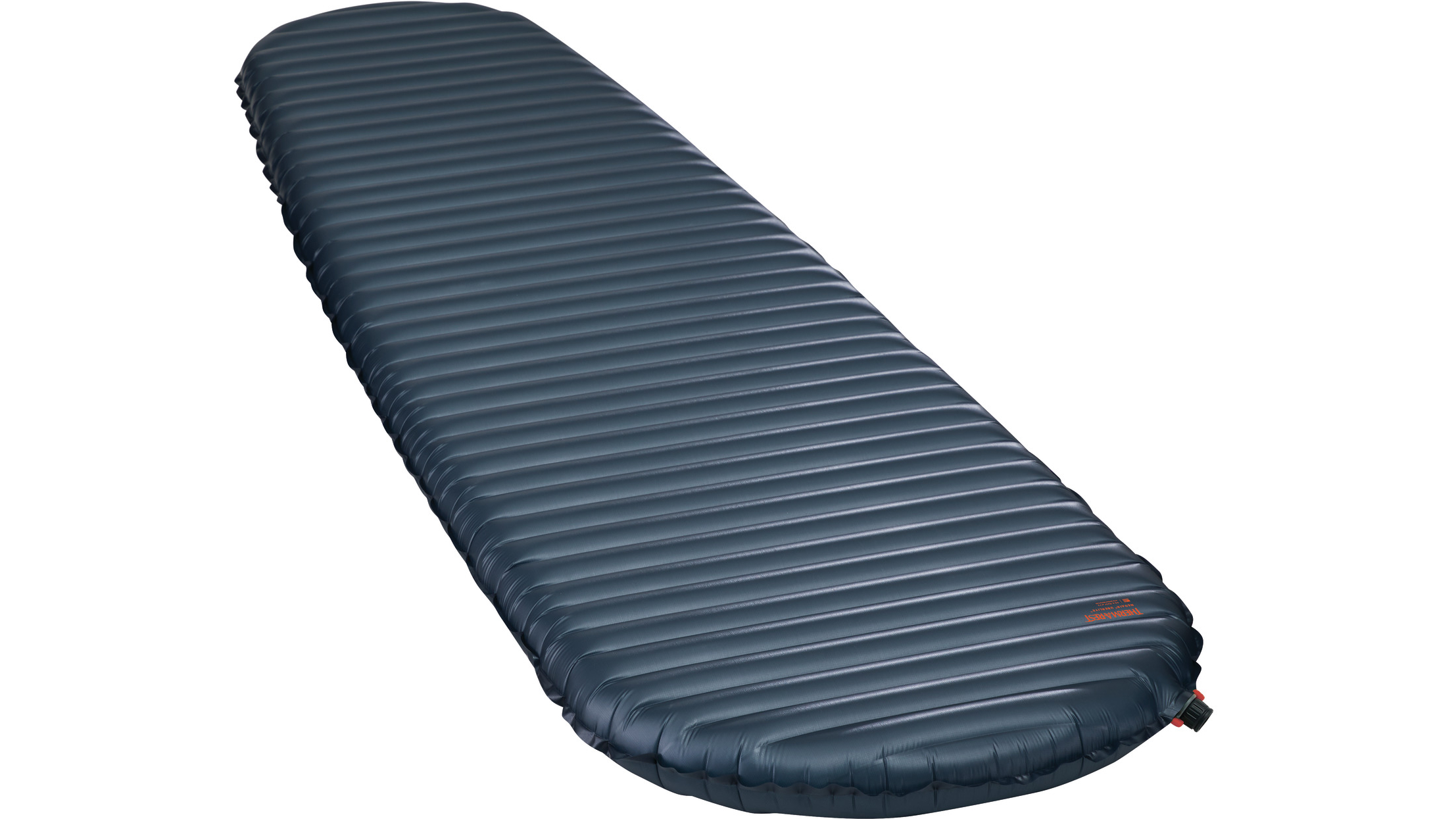Advnture Verdict
‘Fast and light’ types will love this featherweight wonder, which has a tiny pack size and an impressive warmth-to-weight ratio.
Pros
- +
Extremely lightweight
- +
Highly packable
- +
Comfortable
Cons
- -
Not the warmest
- -
Not as durable as some other mats
You can trust Advnture
First impressions
The Thermarest NeoAir Uberlite sleeping pad will be a popular choice for many campers because no outdoor brand is more synonymous with sleeping mats than Thermarest. The US company originated the concept of the self-inflating camping mattress, way back in the early 1970s. The NeoAir UberLite is one of their premium pads and claims to be the ‘absolute lightest insulated air pad ever built’.
We can believe it – the mat is both remarkably light and impressively compact. It rolls away to about the size of a beer can and tips the scales at a mere 250g. Yet unlike most other minimalist pads, it offers decent levels of comfort, with an inflated thickness of 2½ inches (6.4cm).
- Want to browse other options? Explore the best sleeping pads here
- Learn how to choose a sleeping pad
- Got everything for your next adventure? Check our camping checklist
The mat itself makes use of a transverse chamber design, similar to other mats in the NeoAir range. It’s available in small, regular and large sizes – the middle of the bunch, which we tested, has dimensions of 183 x 51cm. That’s a little narrower than some other pads, and there is a fairly pronounced taper towards the feet too.
However, it’s still suitable for larger frames (though very broad-shouldered types might want to consider the large size, although that one does have a slight weight penalty as well as a marginally increased pack size).
• RRP: $180 (US)/£140 (UK)
• Style: Insulated air mat
• Weight: 250g/8.8oz
• Variants: Small/regular/large
• Dimensions (regular): 83 x 51cm/72 x 20in
• Thickness: 6.4cm/2.5in
• Pack size: 15 x 9cm/6 x 3.5in
• R-value: 2.3
• Compatibility: 2-season
In the field
The Uberlite’s light weight and extreme packability makes it easy to take pretty much anywhere. It will stow easily in a small pack and will even tuck away into the side pocket of a large rucksack if necessary. That makes it a great option for long-distance walkers who are looking to drop as much trail weight as possible.
When it came to setting up camp, we were careful to select a flat, grassy pitch. That’s because we were a little worried about puncturing the lightweight 15-denier fabric of this mat – so concerned, in fact, that we also packed the included repair kit, just in case. In the event, we didn’t need it, but it’s worth noting that this is a comparatively delicate mat that is unlikely to stand up well to rough treatment.
Testing was conducted in late British summer, and the mat was plenty warm enough on a lofty wild camp in the mountains of North Wales. But the Uberlite doesn’t have the internal reflective layer found in other NeoAir models, and as a result it is not quite as warm, with an R-value of 2.3 that reflects its intended use as a two- to three-season mat.
All the latest inspiration, tips and guides to help you plan your next Advnture!

We reckon cold sleepers might find it a bit chilly if you camped out on a frosty night.
It is comfortable though, even for side sleepers, and is fairly stable too, though as with many Thermarest mats it does have a slight tendency to collapse at the very edges. However, it is much quieter than many other insulated mats, with minimal crinkle or rustling, even if tossing and turning.
The mat inflates via Thermarest’s new WingLock valve, which has a one-way system to prevent air escaping during inflation and a pair of ‘wings’ that can be twisted to aid rapid deflation. The valve itself is also chunkier, to make blowing up the mat easier.
These are all undoubtedly improvements over Thermarest’s classic valve, while still being fairly intuitive. It’s also a very robust design. But we still find other brands’ systems easier to use – especially with a pump sack, which we personally prefer to good old-fashioned lung power.
Despite those minor reservations, however, we were impressed. There’s no denying that this is a truly impressive bit of kit engineering from Thermarest. That tiny pack size and minimal weight is certainly a big plus, and its best-in-class specs will attract the sort of adventurers who like to head to the hills for stealthy overnighters with nothing more than a daypack.
Indeed, it would make the ideal pairing for a backpacking quilt or minimalist down bag if you’re looking to create a superlight but very comfortable two-season sleeping system.
An outdoors writer and editor, Matt Jones has been testing kit in the field for nearly a decade. Having worked for both the Ramblers and the Scouts, he knows one or two things about walking and camping, and loves all things adventure, particularly long-distance backpacking, wild camping and climbing mountains – especially in Wales. He’s based in Snowdonia and last year thru-hiked the Cambrian Way, which runs for 298 miles from Cardiff to Conwy, with a total ascent of 73,700 feet – that’s nearly 2½ times the height of Everest. Follow Matt on Instagram and Twitter.


